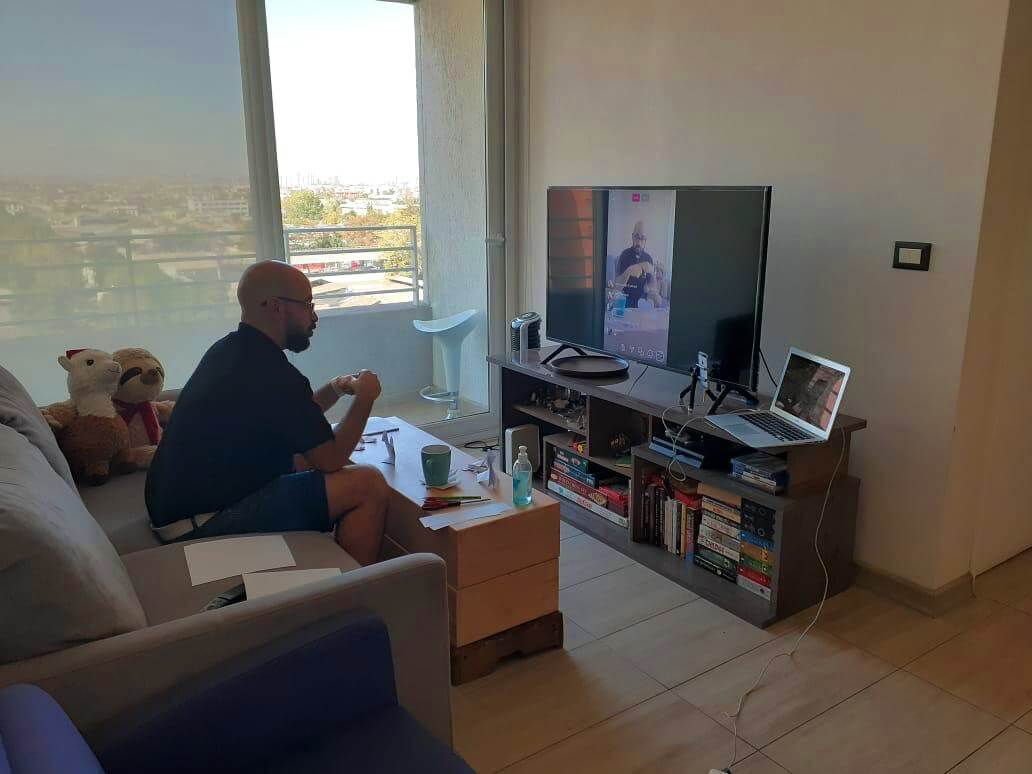As global language teachers who want to stay up to date with recent developments in education (and also stay competitive when it comes to getting that dream job), we have to constantly evolve as educators and include modern ways of teaching in our lesson planning and our teaching methods. One such method that all ESL teachers should know about is task-based learning (TBL), also referred to as task-based language teaching. What is task-based learning? Read on if you’re interested in learning about this rewarding and fun teaching method!
If you’re new to teaching, you’ll want to get initial training and qualification with a TEFL certificate. You can explore our online TEFL courses to get started!
Why is task-based learning important?
- During task-based learning, students solve tasks that are relevant and interesting to them. In order to solve the task, they need to use the target language they’re learning to communicate with their peers. They use authentic language instead of answering grammar or vocabulary questions about the language. Students — especially younger learners — don’t actually feel that they’re studying a language at that moment because they’re engrossed in the task they’re working on.
- Task-based learning is especially conducive to group learning. Learning a language as a group is also a very important contributor to effective retention. Collaborating with others and becoming confident with the language within a group is a key step in acquiring that language. Also, receiving positive feedback from peers and teachers increases confidence and motivation to learn and to communicate with others.
- Students’ understanding of the language also deepens because the realistic context in which they’re learning the language is relevant to their personal lives. It’s a good idea to ask your students about their hobbies and preferences at the beginning of a course so that you can include their interests in the tasks you set.
- In addition to the benefits for students, solid knowledge of this method will also increase your job prospects as a teacher. Some job ads specifically ask for task-based language teaching experience!

What is the task-based method?
The task-based teaching approach is one of many modern ESL teaching methods and focuses on setting a goal for students — this could be a report, a video, or a presentation — and then following three main steps to achieve that goal.
1. The pre-task
During this stage, which can take up a whole lesson if needed, the teacher introduces the task to the students and gets them motivated to solve it. Once everyone is engaged, the teacher should explain what is expected for the task.
Verbal explanations can be supported by an example from the teacher or by showing a previous student’s work. The teacher can then give further instructions if needed and offer advice on how to approach the task.
2. The task
This is the main stage of task-based learning, where students start working on the task, usually in groups or pairs. This stage is done in the target language so that students feel the need to use the language they want to learn in order to solve the task.
The teacher doesn’t usually join in the work process. Instead, he or she will monitor the students and offer hints if students really need support.
Find out about teaching English online to groups.
Learn about 8 ESL methodologies and get sample activities with the free guide to
Teaching English Learners: Popular ESL Learning Methodologies
download3. The review (or post-task)
Once the students have completed the task and have something to present, the review stage, also known as the post-task, starts.
It’s a good idea to let students evaluate each other’s work and only offer a teacher review of frequently-made errors during the task. Peer correction could be carried out in the form of comments, feedback discussions, or a checklist with additional room for free commentary.
The review stage offers students the opportunity to reflect on their work and analyze it in order to improve their skills for the future.

What is a task (vs. an activity)?
Task-based learning uses a lesson structure that incorporates different activities to solve a task. The task can span the length of an entire lesson or, if it’s project-based learning, it can take up several lessons to complete.
Essentially, the task is the big-picture assignment that students are trying to complete or solve, and the activities are the individual steps or exercises they take to achieve the task.
Examples of tasks include:
- Creating a presentation
- Making a video or short movie
- Writing a piece of text, such as a newsletter article
- Acting out a skit
- Creating an original game that includes writing down the game rules, playing the game, and evaluating the game
- Working out the solution to a practical problem, such as planning an upcoming trip or gathering missing information, like working out who started a rumor at school
- Participating in a group debate or discussion, like arguing for a favorite competitor in a TV show
Map out your unique career path with the free guide to
Self-Guided Professional Development in ELT
downloadWhat is a task-based activity?
A task-based activity is a procedure in which students have to use the target language in order to achieve a specific outcome. The best TBL activities reflect real-life situations, so the students can see that the lesson is relevant to their own lives.
One of the main task-based learning advantages is that the activities allow students to use the language they know freely and exploratively as long as they are able to complete the overall task. Error correction can be done at the end of the lesson if necessary but not during the activity, so you encourage fluency and motivate students to use the language.
An example of a task-based activity could be to have each student draw a comic picture and explain the content and the inspiration behind it to the group. They then have to collaborate to put together a comic strip that includes each student’s picture, which is the main task (to create an original comic strip).
- You can also use task-based language teaching and task-based activities in the online classroom. You can have students submit their work and you can share the results with the group. Then, everyone can work together on the main task that you previously set.
Learn more about creating materials for the EFL classroom!

How can you apply a task-based approach to your teaching?
As an English teacher, you will not get around the “boring stuff,” such as grammar drills and vocabulary work. You also have to keep in mind that your students need to practice all four skills: writing, reading, speaking, and listening.
However, keeping the drills and language exercises to a necessary minimum and including more task-based learning in your curriculum can help students use the target language immediately and retain words and grammar points more effectively.
Here are two examples of task-based lesson plans:
In the physical classroom (with a group of 10-15 teenagers)
- Greeting and warm-up: While the students are settling in, you can play a song that’s popular among your students. You can let them sing along if they know the song well!
- Assign the task and give instructions: “Create your own music video in groups of 4-5 students using a song of your choice. Everybody has to have a role, from managing the camera to coming up with choreography to performing in the video. You have this lesson for planning and the next lesson for filming. We will watch all of the videos in the third lesson and give feedback to each other.”
- Do the task: Let students gather in groups and start planning their video. Monitor their language and teamwork, and take notes. Make sure that everybody is engaged and involved and that there are no students who are just standing by.
- Review: Before the lesson ends, give brief and motivating feedback to the students, and praise them for their efforts and their use of the language. Remind the students to be ready to start filming during the next lesson.
In the online classroom (with around 5 young learners)
- Greeting and warm-up: Call out each student’s name and show each of them a card with a different word on it. It could be “dog,” “play,” “boy,” “girl,” “sunny,” etc. Have each student read their word out loud.
- Assign the task and give instructions: “Create a short story that includes all of the words I gave you just now. You can decide the order of the words and how you use them in your story. You can add as many words and plot twists as you like. Each student has to contribute at least one sentence. Please start.”
- Do the task: Watch the students on camera and take notes. If communication between them comes to a standstill, you can provide some support by asking questions, such as “What do you think could happen next?” or “Who can come up with the next idea?” or “Who wants to include their word next?” Your support should encourage the students to participate without giving them an idea straight away. Finally, have the students write down the story that they created. They can then take turns reading it out loud, one sentence at a time.
- Review: Praise your students for their effort and teamwork, and applaud their story. Let the students have time for self-reflection and respond to questions such as “What did you do especially well today?” or “What would you like to improve for next time?”
If you’re not comfortable with task-based language teaching just yet, don’t let that discourage you. You can envision using this teaching method as your personal task. Set yourself a goal, try TBL out in your next lesson, and review your class afterward to reflect on what to improve and what went well!












